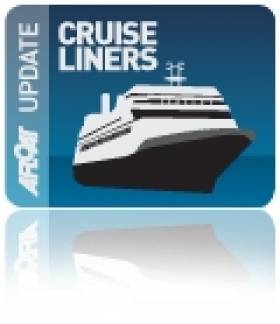Displaying items by tag: Riviera
Brand New Marina Calls to Dublin
The cruise started from Copenhagen and toured several ports in Norway from where the vessel continued to Lerwick, Torshavn,Iceland, Portree and her last port of call was Belfast. The vessel had berthed in Dublin's Alexandra Basin and departed this evening bound for Dover.
Following the Marina's departure out of Dublin Bay via the North Burford bouy, was the Marco Polo. The 1965 built vessel operates for Cruise and Maritime Voyages and she proceeded past the South Burford bouy bound for St. Mary's, the capital of the Scilly Isles.
There will be many more cruisecalls such as the ultra luxury six-star Silver Cloud which is due on Sunday. The 16,927 tonnes vessel operated by Italian owned SilverSeas Cruises, has only a capacity for 294 passengers. Following that visit P&O Cruises 115,000 tonnes Azura docks in the capital this day next week to disembark up to 3,500 passengers. To view a full list of cruise callers click HERE.





























































